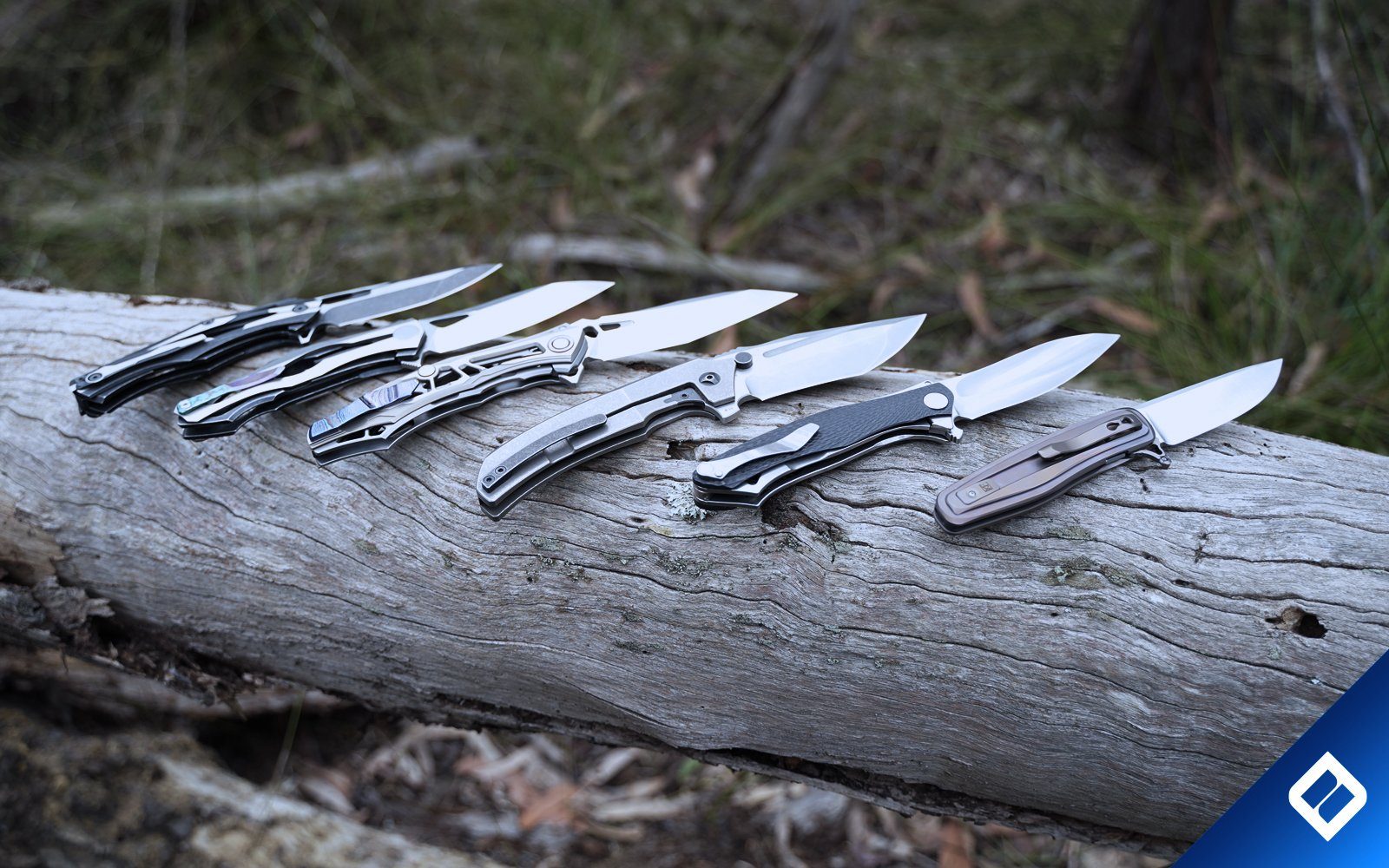Knife 101, Which Knife Is For Me?
Which knife is for you? With all the knife varieties out there it can be confusing trying to know what one is best for you and your requirements.
Knife Types
Lets take a deeper look into the common knife varieties currently available today:
- Pocket Knife - This can be a knife that has multiple blades like a Victorinox, it can be folding knife that can be carried in your packet with ease, generally these fall into a multi-tool type knife where there is more than just a knife on the tool.
- Chef Knife - Generally a medium to large fixed blade knife with a food safe handle, brands like Global and Victorinox are examples
- Cleaver - A heavy large knife that is used for cracking bones in meat and usually weighs more than a normal knife.
- Utility Knife / Box Cutter - A triangular blade that is generally disposable, It generally cuts boxes, Gyprock, Carpet and is often used in construction.
- Machete - A heavy large knife that is used for cutting of vegetation, Palm trees and undergrowth, it is usually sharpened to a convex edge to give durability.
- Switchblade - This knife is a discrete tactical knife where the blade is hidden within the frame and the blade can be deployed with the press of a button rapidly, Many countries ban these blades for their deadly intent.
- Fighting / Combat Knife - Usually a knife with a semi large blade, these knives are designed to inflict pain and fear on the enemy, a famous knife is the Bowie knife like in "The Crocodile Hunter".
- Throwing Knife - A knife that is weighted correctly so it can be thrown with ease.
- Hunting Knife - Is a knife used for cutting up animal flesh and generally features a gut hook for quick work of preparing a game animal for eating.
- Survival Knife - These knives generally have serrations down on part of the blade for general purpose cutting and then a normal v grind on the other portion of the blade, generally a fixed blade that requires a sheath and can contain items in the handle like matches and fishing line.
- Dagger - Almost always these types of knives are double edged meaning they have no back spine but two sharpened edges, they are used in a stabbing motion to be affective.
- Butterfly Knife - A double edged blade with two handles that counter rotate around the tang to hide the blade between its handles when closed, often shown in movies and also used for spinning in your hand as a sport like activity.
- Custom Knife - Almost always hand made by a blacksmith or specialist knife maker, these knives are usually for collectors and are made from exotic materials.
- Assisted Opening Knife - A knife that contains a small strong spring that assists the opening of the blade when the user is opening it by hand.
Types Of Blade Materials
Generally knives are made of a variety of steel that is hardened to a specific Rockwell level of hardness, each variety has its pros and cons:
- Ceramic - Extremely durable and almost never needs to be sharpened, but is fragile so if dropped it can shatter or chip like glass.
- High Carbon Stainless Steel - Is a variety of Stainless Steel with higher amounts of Carbon, has a good edge retention.
- Carbon Steel - Is generally maintenance free but can be vulnerable to rusting if water is left on the blade.
- Stainless Steel - Is a common steel of choice containing Chromium, Iron, Nickel and Molybdenum with traces of Carbon
- Laminate - A layered steel that is sandwiched, it has a tough outer layer that resists corrosion but the blade area is still susceptible to corrosion
- Damascus - A forged steel that was early on used in swords, it has a distinct range of patterns in Pattern welded or San-Mai
Types Of Knife Handles
Handles can come in a wide range of materials, here are a few of the most common:
- Wood - Has been around for centuries and is still one of the most common handle varieties today, the issues that arise are cracking and swelling of the wood from water.
- Synthetic Rubbers - Kraton which is synthetic, used because of its softness and durability against normal rubber
- Injection Moulded Plastic - Extremely common in commercial environments due to its resistance to mould and water, most common in commercial kitchens and is sometimes even a requirement to meet health and safety standards.
- Resin - Often knife makers and black smiths will cast their own resin with stabilized wood and other interesting things like LEGO as an example for a cool unique look.
- Steel - Some knives have a 1 piece handle welded onto the blade for a look and weighted feel.
- Micarta - Is becoming increasingly popular with folding knives due to its look and cost effectiveness to make, Made with Canvas, Paper, Linen, Carbon Fibre, Fibre Glass and other thermosetting type plastics set in an epoxy.
- Leather - mainly used to wrap around existing handles for a specific look, usually military and hunting
- Titanium - Widley popular in the high end folding knife market for brands like Chris Reeves knives and Custom Knife Factory (CKF).
- Timascus - is an exclusive steel produced by Alpha Knife supply, it is essentially a Titanium version of Damascus, It shows various colours when heated
- Mokume - Is a laminated metal, made out of non-ferrous metal, its believed to be created over 300 years ago, it is a decorative steel variant
Learning about knife varieties and types can greatly assist when you are learning how to sharpen on a guided sharpening system

